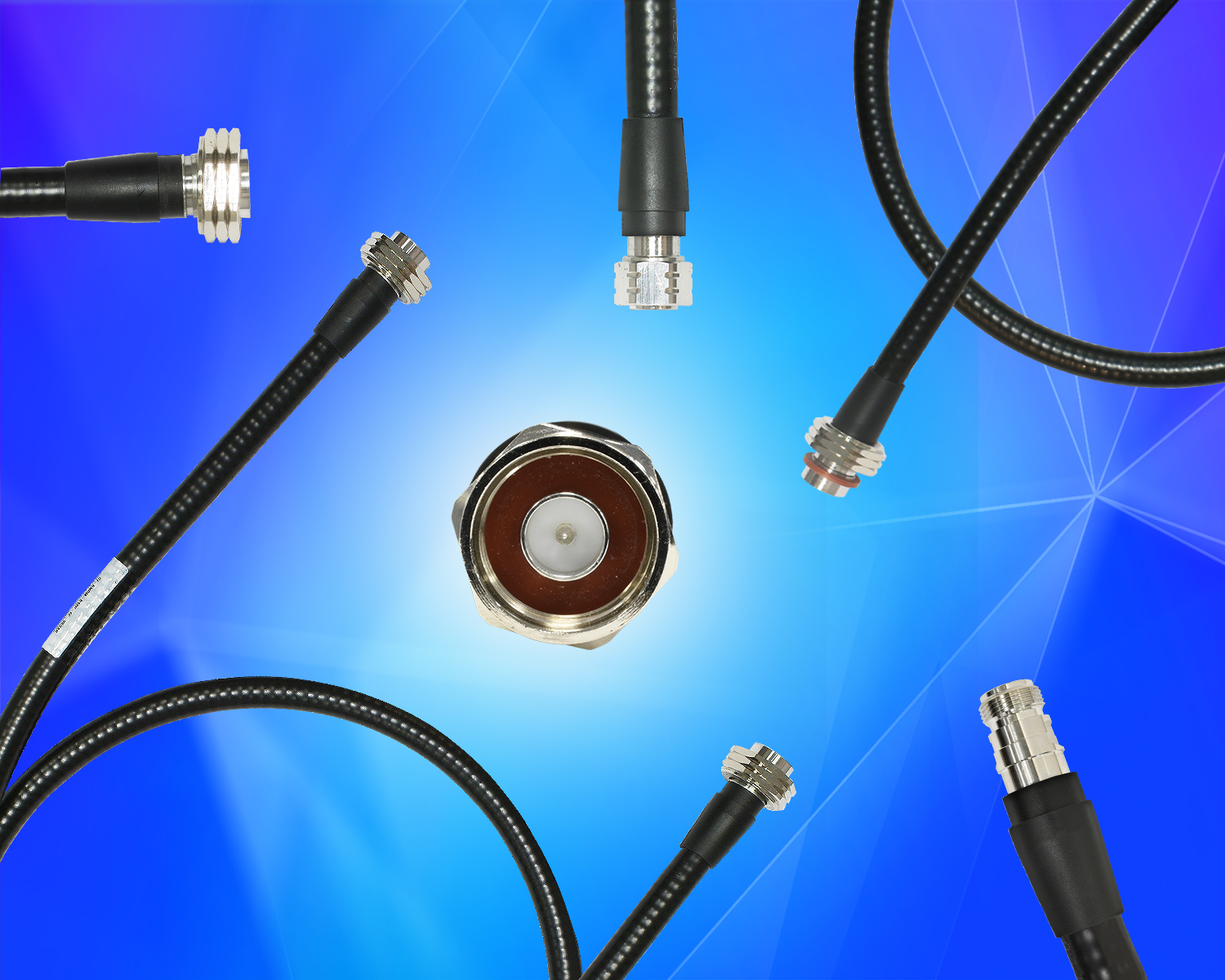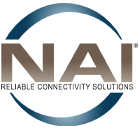
10 May Uses of Series-C Coax Cable Assemblies in the Telecom Industry
Coaxial cable assemblies have been used to carry power and signals since the early 20th century, especially as big data gains speed. Here’s how our STEADY LINK® Series-C coax cable assemblies are meeting the telecom industry needs for a 5G cable assembly world.
In 2021, the global telecom industry market size was valued at over 1.7 trillion USD with a projected compound annual growth rate (CAGR) of 5.4% through 2028 — and much of it has to be wired. From cell towers to chargers to IoT hardware, the telecom industry relies heavily on cables to keep it connected.
We offer many custom coax assembly builds at NAI, but our STEADY LINK® coaxial cable assemblies are a go-to solution for several standard telecom applications. Whether it’s antenna systems, radios, or other 5G feeders, coaxial cables empower many applications in the telecom industry. In this article, we’ll explore the importance of coaxial cable assemblies to two essential subsectors of the telecom market, and how our STEADY LINK® Series-C coax cable assemblies to connect them both for success.
Series-C Coax Cable Assembly Uses in 5G
Telecommunications today requires 5G cable assemblies—and the build-out is well underway. A 5G infrastructure is now being installed in many small cell antenna locations across the US. And while it remains to be seen how long it will take for coverage to span the country, the technology is already affecting how we work and live. 5G is impacting many industrial applications, like:
● IoT and IIoT devices
● Ecommerce
● Edge computing
● Industry 4.0
● Artificial intelligence and machine learning (AI/ML)
● High-speed internet usage
● Virtual reality
5G works by expanding transmission frequencies into the high-energy spectrum, where more bandwidth is available. The result is greater transmission speeds, but also drastically shorter ranges. It takes a much larger number of 5G antenna devices to cover the same distance as a 4G radius. This creates a greater need for coaxial cable assemblies that can do the job, like the NAI STEADY LINK® Series-C Coaxial cable offering.
How Steady Link™ Series-C Coax Cable Assemblies Are Used for 5G
Whether it’s modems, routers, antennas, or sensors, 5G antenna hardware requires coax cable assemblies to work. From cost to durability, NAI STEADY LINK® coax cables to have several properties that make them well-suited for 5G use, like:
● High power. They transmit signals at higher frequencies and accommodate the need for an increase in power for energy-dense 5G installations as compared to the hardware found in older 4G-based technologies. This means that, as a result of the compact installations found on 5G hardware I/O panels, coaxial cable assemblies are required to carry more power, often with a smaller cross-section of cable and connector. And NAI STEADY LINK® Series-C coax cable assemblies deliver.
● Short length. Rather than transmitting data across long distances at lower speeds, cables used in 5G carry data shorter distances at higher speeds. Fiber optic cables minimize signal losses over long distances, but the shorter distances of 5G connections make coax cable assemblies a reliable and efficient choice. And NAI STEADY LINK® Series-C coax cable assemblies deliver.
● Rugged, yet built to be flexible. From routers in public locations to portable sensors mounted in vehicles, 5G tech is commonly found outdoors, as well as in indoor infrastructures. These cable assemblies can withstand trying conditions and accommodate challenging routing spaces. — NAI STEADY LINK® Series-C coax cable assemblies are rugged and durable.
● EMI-resistant. Higher-frequency transmission means that 5G devices must be able to endure more than the elements; the signals must be guarded against influences of external interference. The construction of the jacketing, shielding, and braiding configurations of NAI STEADY LINK® Series-C coax cable assemblies protect the core conductors from electromagnetic interference (EMI), keeping signal loss to a minimum.
● Cost-effectiveness. NAI STEADY LINK® Series-C coax cable assemblies can be competitive with fiber optic installations in 5G applications.
NAI’s STEADY LINK® Series-C coax cable assemblies offer durable, cost-effective, energy-dense solutions that will connect the world to a comprehensive 5G network. Our cables can be ordered to a number of different lengths and have the shielding capabilities to transmit high-frequency 5G data at prices customers can afford.
Steady Link™ Series-C Coax Cable Uses in Cell Tower Antennas
While 5G cable assembly will empower the innovations of tomorrow, coax cables are often found in the cell tower antennas that make today’s technology a reality. Coax antenna cable is used to connect multiple tower components, including:
● Base stations
● Microcells
● Antennas
● Feeder systems
● Transmitters
NAI’s line of new rugged STEADY LINK® Series-C coaxial cable assemblies is well-suited to link wireless components that transfer RF signals from point to point. Useful both for large 4G cell towers and small-scale microcells, these coax jumpers are designed for a variety of multiple telecom applications.
Cell tower equipment like transmitters and antennas still require interconnections to other components to transmit their data. That means the current and foreseeable surge in demand for the wireless hardware required to power 4G and 5G networks will increasingly depend on the reliable and steady performance of coaxial cable interconnects as the industry continues to thrive.
How STEADY LINK® Coax Cable Assemblies Are Used in Cell Towers
NAI’s RF50 coax jumpers are used to conveniently connect cell tower equipment for simple installation. Our rugged RF50 coax cable assemblies are ideal interconnects for cell towers, especially in applications involving low signal attenuation, VSWR, and high-frequency transmission.
Our assemblies are built to order from inventoried components and can be ordered as standards or customized to fit the needs of each cell tower application. Customer-specified features can include:
● Cable length
● Cable type and size (annular corrugation and flexible corrugation)
● Connector angle (straight or right-angle)
● Connector type and gender
● Weatherproofing
NAI’s STEADY LINK® Series-C Coax Cable Assemblies are 50-ohm coax cable jumpers that are available with different sizes and styles, and include:
● RF50 Low PIM Corrugated Coax Cable Assemblies ( 1/2″)
● RF50 FLEXIBLE Low PIM Corrugated Coax Assemblies ( 1/4″, 3/8″, 1/2″)
● RF50 FLEXIBLE Low PIM Corrugated Coax Assemblies with Nex10 Connectors (1/4″, 3/8″, 1/2″)
● RF50 Low PIM Corrugated Coax Assemblies with Right-Angle Connectors (1/4″, 3/8″, 1/2″ rigid, 1/2″ flexible)
● LMR* Coax Assemblies (240, 400)
Find Customized Designs for Series-C Coax Cable Assemblies from NAI
With so many different options, our coax cable assemblies like the STEADY LINK® Series-C Coax Cables are able to meet the many different needs of the wireless industry. All our builds are engineered to order from inventoried components to ensure that all parts are in stock, and we take special steps to ensure supply chain dependability. Learn more about how NAI manages a responsive supply chain in our recent blog How NAI Reduces Risk Of Global Supply Chain Disruptions.
To get started with ordering the cable assembly products you need to use the Coax Assembly Configurator to request a quote from NAI for the exact assembly you want. Or Ask An Expert to fulfill your wireless interconnect needs today. NAI has been a trusted supplier and manufacturer of interconnect solutions globally for many years and continues to operate as an industry leader.

